Myo Products
Tools, materials, and supplies created to help therapists treat all types of oral myofunctional disorders.
Tools, materials, and supplies created to help therapists treat all types of oral myofunctional disorders.
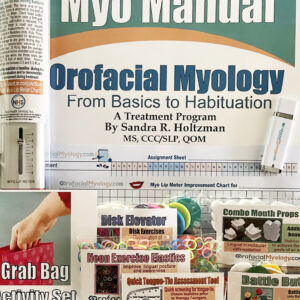
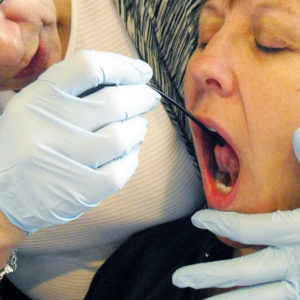
The MEGA MYO KIT offers you the best savings by including the Myo Manual and ALL the tools you need for a complete treatment program. In addition to the six basic tools, you receive the Myo Lip Meter, the Myo Lip Meter Charts and the Assignment Charts. This Treatment Program, used worldwide in all types of facilities, is the culmination of the author’s lifetime of experience treating and studying oral myofunctional disorders and “tongue thrust.” The Myo Manual includes proficiency exams, observation sheets to establish baselines, two tracks for subconscious training, sample evaluation and oral examination forms, Night Time Charts, Time Charts and an Appendix Section with additional forms. All three phases are covered: Pre Treatment Conditioning, Chewing & Swallowing Mechanics, and Integration into Lifestyle. Dozens of exercises are provided for every small step along the way, providing you with detailed exercise activities tailored for each of your patient’s individual needs. The MEGA KIT provides a Systematic, Sequential, and Sensible treatment program for oral myofunctional disorders of all types.BONUS! 100% credit for this purchase may be applied toward the Neo-Health Services introductory course in orofacial myology for those who are eligible and choose to attend.
This Treatment Program includes two auto-suggestion tracks to be downloaded upon purchase: Adults and older children, and Younger children.
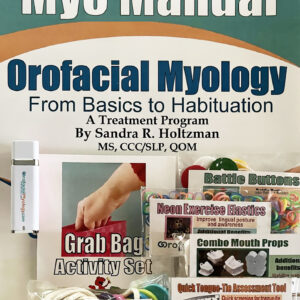
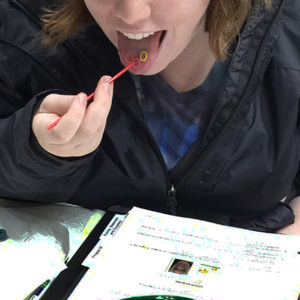
The MYO KIT includes the Myo Manual, the 6 six basic tools and the Grab Bag Activity Set to start your treatment program. The Myo Manual Treatment Program, used worldwide in all types of facilities, is the culmination of the author’s lifetime of experience treating and studying oral myofunctional disorders and “tongue thrust.” It includes proficiency exams, observation sheets to establish baselines, two tracks for subconscious training, sample evaluation and oral examination forms, Night Time Charts, Time Charts and an Appendix Section with additional forms. All three phases are covered: Pre Treatment Conditioning, Chew-Swallow Mechanics, and Integration into Lifestyle. Dozens of exercises are provided for every small step along the way, providing you with detailed exercise activities tailored for each of your patient’s individual needs. This is a must for every speech pathologist, dental hygienist and dentist who wants to provide a Systematic, Sequential, and Sensible treatment program for oral myofunctional disorders of all types. BONUS! 100% credit for this purchase may be applied toward the Neo-Health Services introductory course in orofacial myology for those who are eligible and choose to attend.
This Treatment Program includes two auto-suggestion tracks to be downloaded upon purchase: Adults and older children, and Younger children.
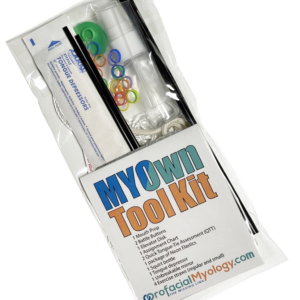
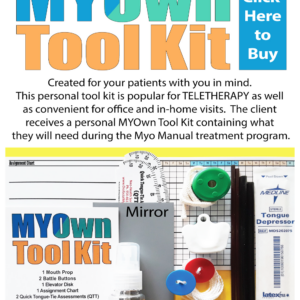
This personal tool kit is popular for TELETHERAPY as well as convenient for office and in-home visits. The client receives a personal MYOwn Tool Kit containing what they will need during the Myo Manual treatment program.
The MYOwn Tool Kit includes: mouth prop, Battle Buttons (x2), Elevator Disk, assignment chart, Quick Tongue Tie Assessments (x2), Neon Elastics, squirt bottle, tongue depressor, mirror, exercise straws.
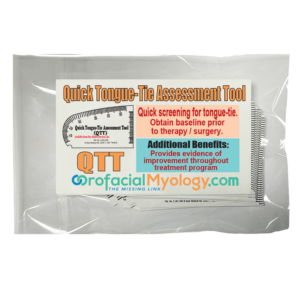
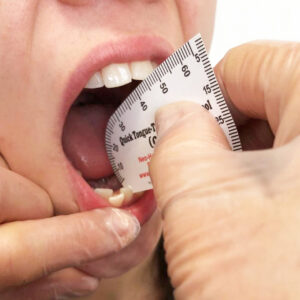
This disposable tool is used to perform a quick test for tongue-tie (ankyloglossia) as well as for general oral and facial measurements. Easy to use for right and left handed people. Measurements on both sides of tool. Directions are included in the package.
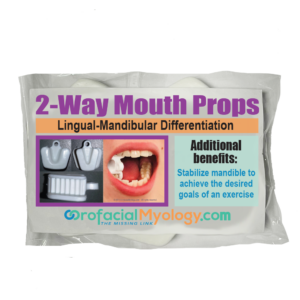
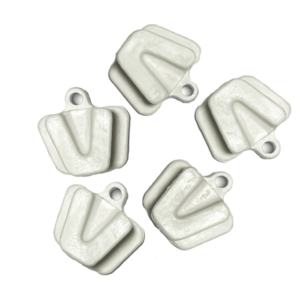
The 2-Way Mouth Prop is a reusable stabilization tool. 2-Way Mouth Props (2WMP) can be oriented as needed for each client. Since mandibular involvement is such a common symptom of an oral myofunctional disorder, the clients are first given exercises to “dissociate” or separate mandibular from lingual movements. Prior to being able to achieve this, “assistance” is needed in the form of a 2-Way or 3-Way Mouth Prop to help the client achieve the desired goals of an exercise. Package of five props.
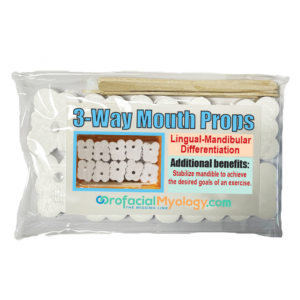
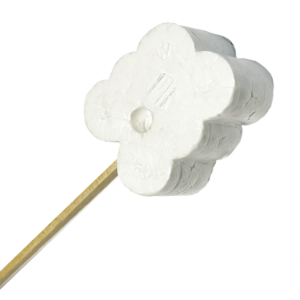
The stabilization tool suitable for all your patients. Since mandibular involvement is such a common symptom of an oral myofunctional disorder, the clients are first given exercises to “dissociate” or separate mandibular from lingual movements. Prior to being able to achieve this, “assistance” is needed in the form of a 2-Way or 3-Way Mouth Prop to help the client achieve the desired goals of an exercise. The 3-Way Mouth Prop can be oriented as needed for each client.
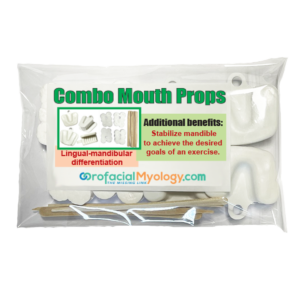
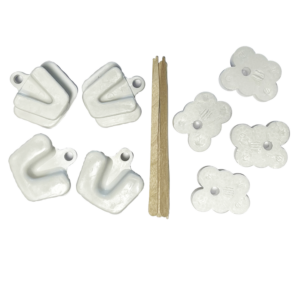
The Mouth Props are the most common stabilization tools. Since mandibular involvement is such a common symptom of an oral myofunctional disorder, the clients are first given exercises to “dissociate” or separate mandibular from lingual movements. Prior to being able to achieve this, “assistance” is needed in the form of a 2-Way or 3-Way Mouth Prop to help the client achieve the desired goals of an exercise. Props can be oriented as needed for each client and have been combined in this package for your convenience.
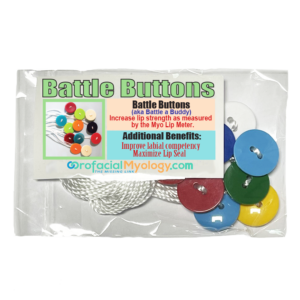
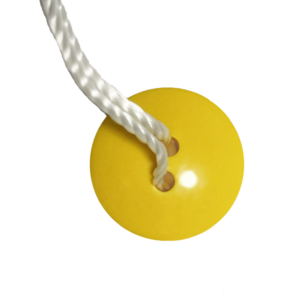
Battle Buttons are used by the individual or with a “Battle Buddy” to improve lip closure, compression, strength, and resistance. Buttons and twine may be disinfected as needed. Colorful exercise buttons and sturdy twine make this a favorite of therapists and clients.
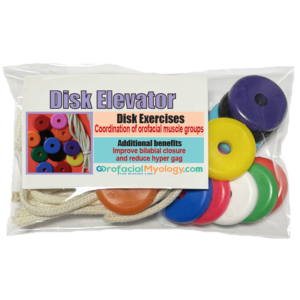
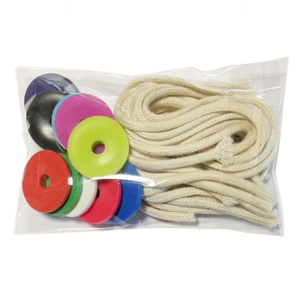
Elevator Disks are colorful disks strung on sturdy cotton braiding. They are used to coordinate and improve lingual/labial/mandibular differentiation and labial competency, correct tongue placement on the alveolar ridge, and decrease hyper-gag. They are a favorite among clients of all ages.
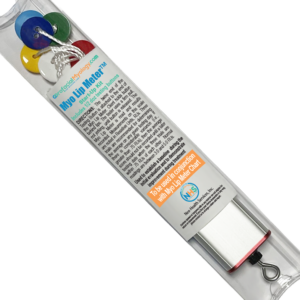

The Myo Lip Meter is used to establish a baseline during the initial evaluation and to demonstrate improvement during treatment. The goals for lip improvement are many, including the ability to obtain and maintain closure necessary for acceptable oral rest postures. The Myo Lip Meter is an excellent source for motivating clients to complete exercise assignments. This tool provides data to insurance companies, referral sources and others. It is a must for those working on improving lip “strength” and closure!
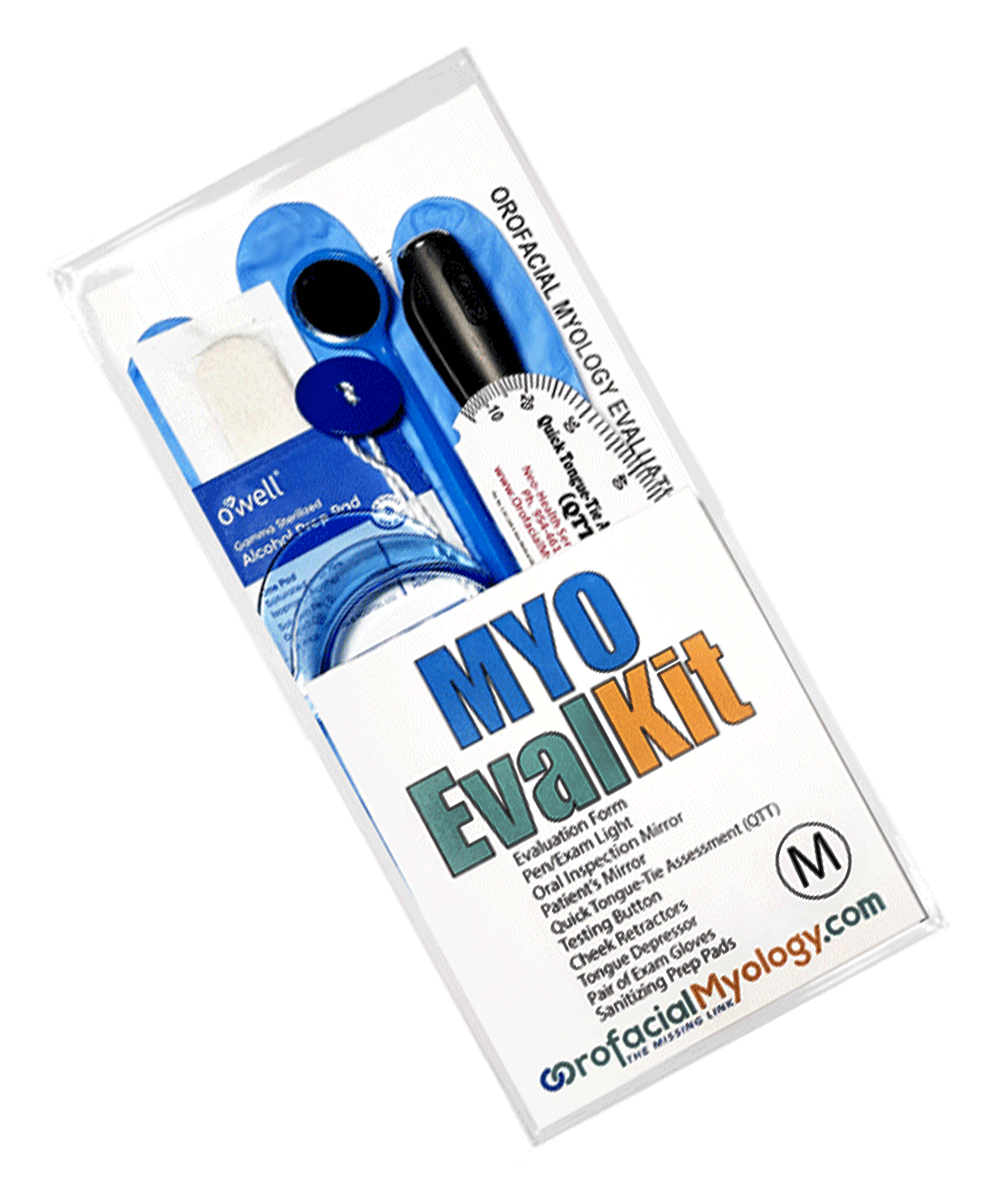
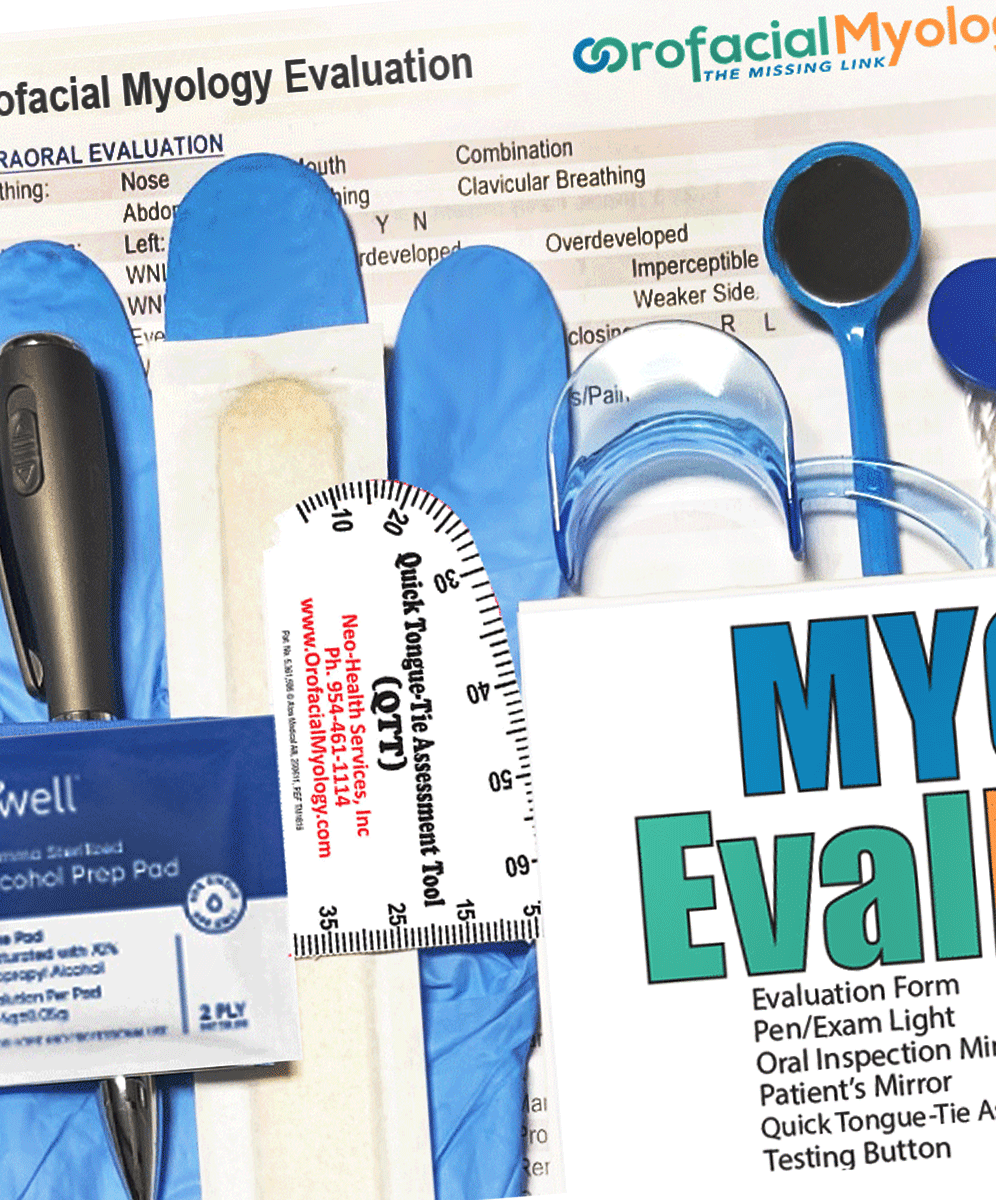
Save time prepping for your myo evaluations with your MYO EvalKits. Each kit is individually sealed and contains all the tools needed for a thorough assessment. Just grab and open… you will have everything at hand: an evaluation form, pen/exam light, exam gloves, cheek retractors, lip testing button, oral mirror, QTT tongue tie assessment tool, tongue depressor, and even sanitizing wipes!
Choose a size for the cheek retractors in the MYO EvalKit: Small, Medium, or Large.
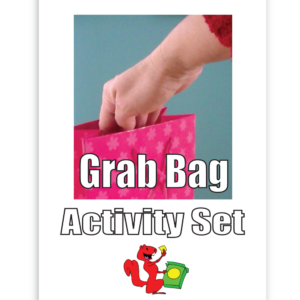
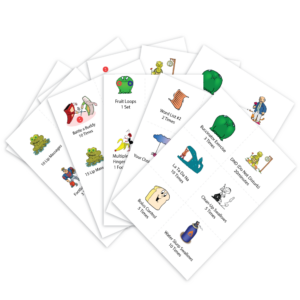
Set of activities, exercises and reminders that are used near the end of the habituation phase in conjunction with the Myo Manual treatment program. They also provide a means of practice for several weeks or months post treatment. Each activity has an accompanying image related to the original exercise that was assigned.
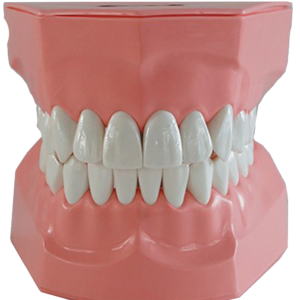
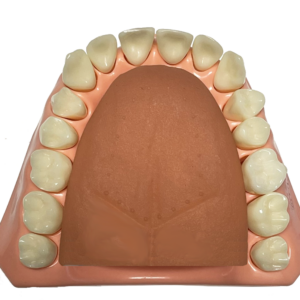
The Myo Demo Model gives you the tool to show your clients where the tongue should be placed, how exercises should be achieved, how far the mouth should be opened or closed for certain activities, which teeth are involved with the biting and chewing process, and much more. BONUS: Flexible Tongue and Large QTT demo included.
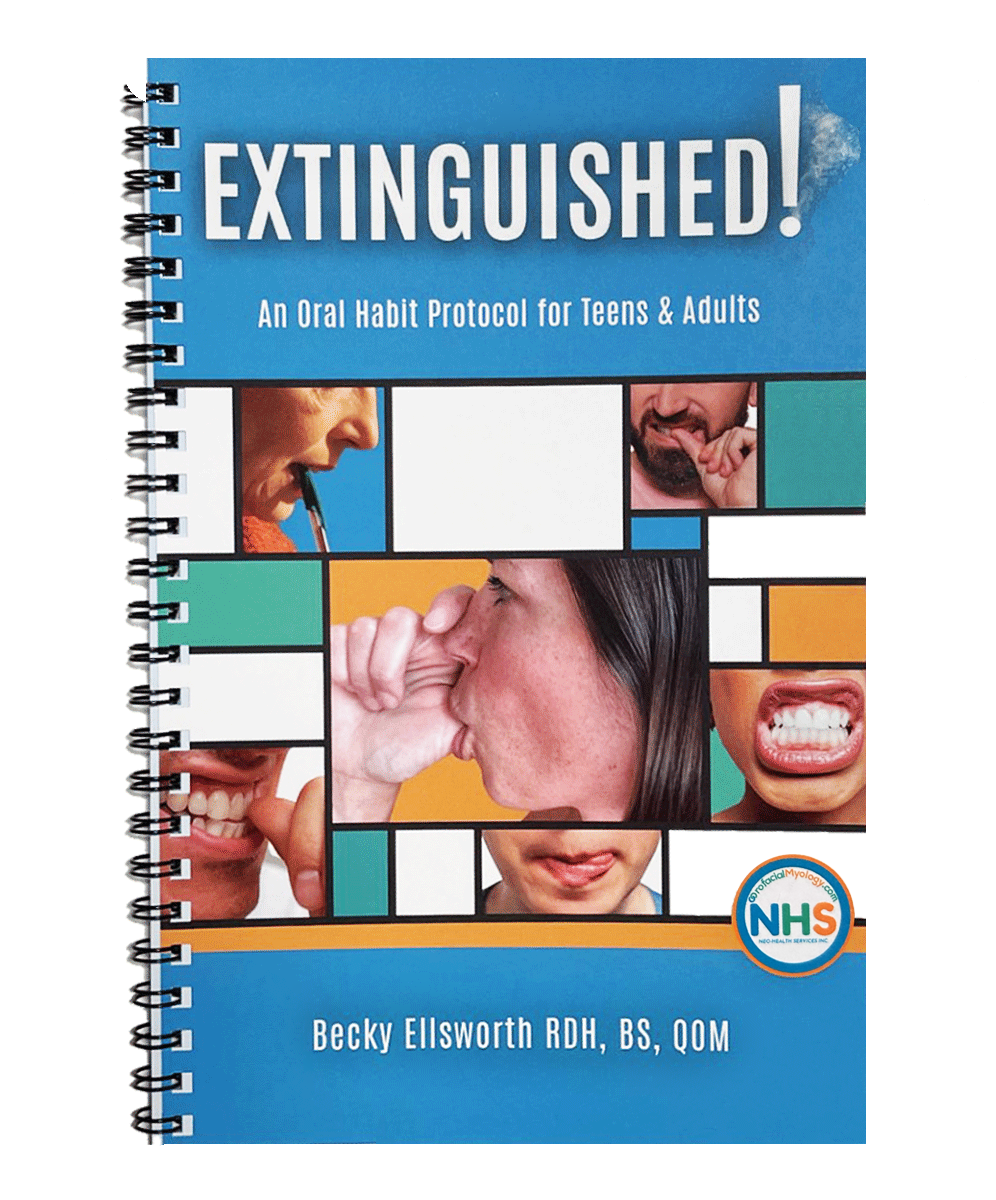
Extinguished! An Oral Habit Protocol for Teens & Adults, is finally here! It targets and addresses the specific needs of this population, since they require a different approach from that of children.
Learn the four Key Elements to successfully eliminate habits.
Session plans, baseline charts, goal setting, and progress tracking charts are all included to guide the client towards the extinction of the habit. Upon purchase, Extinguished! charts and forms are available in digital form to print.
Comes in a convenient “digest” size (5.5″ x 8.5″).
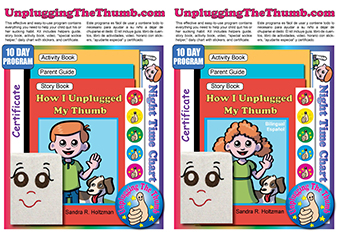
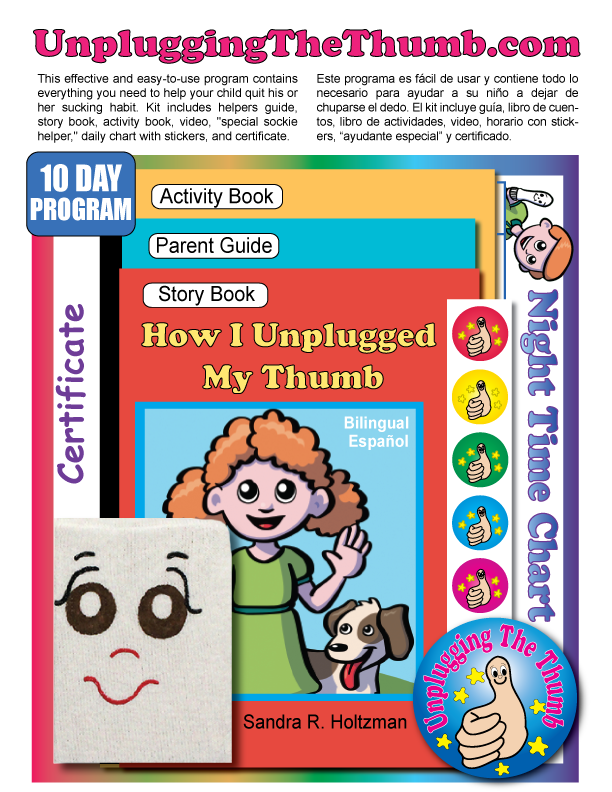
Unplugging the Thumb Parent Edition provides the best opportunity for parents to guide their children in an unstressed way to successfully eliminate oral habits. Each kit includes all the information and components you need: Digital instructions in both English and Spanish to be downloaded upon purchase, Daily Chart with stickers, Activity Book, Certificate of Completion, and Sockie Helper (consider the matching Pocket Pillow option for added value and additional smiles!).
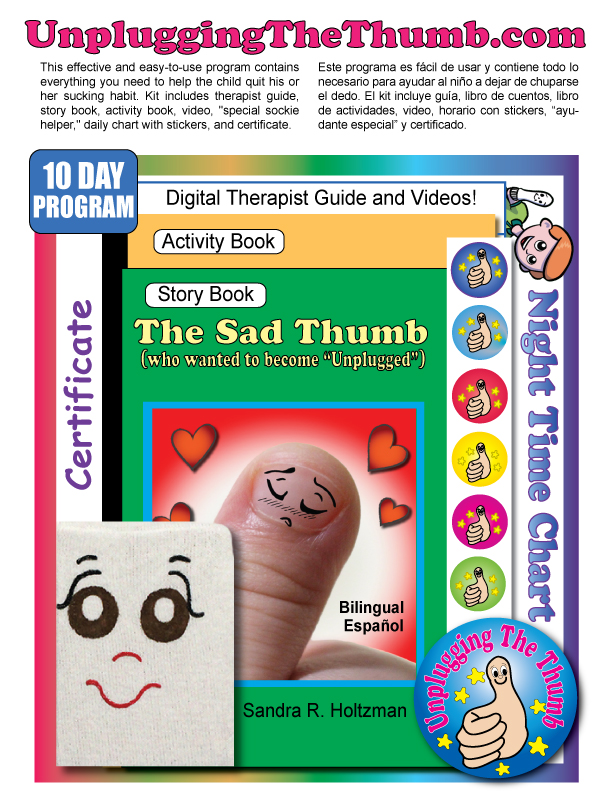
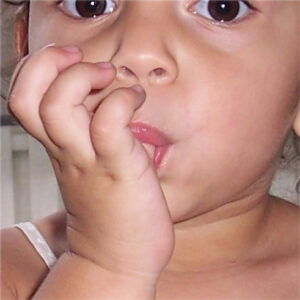
Whatever your professional experience and background, Unplugging the Thumb has been prepared as a complete kit that makes it easy for you to use in your particular setting. This Therapist’s Edition of Unplugging the Thumb provides the best opportunity for successful elimination of oral habits. It is broken down into sessions and gives you all the information you need to get your client to “unplug” the thumb (or fingers!) Each kit includes instructions in both English and Spanish, a digital guide and videos to be downloaded upon purchase, and all of the items needed to offer the program. Consider including the Pocket Pillow option for added value.
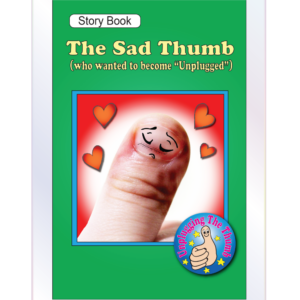
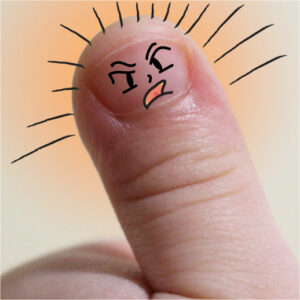
The Sad Thumb Who Wanted to Become Unplugged
As therapists and parents, we often use images to help us tell stories. Although reading might be difficult for small kids, they easily relate to visual representations. Since its publication, the Sad Thumb has become an important therapeutic tool that easily explains to kids the damages of thumb sucking and other oral habits. Although we want the child to be responsible for his decision to quit, we don’t want him or her to feel guilty or judged. So we put the burden on our little thumb… asking “Thumb” to be the one explaining all the undesirable effects of a negative sucking habit. This edition has been updated with even more appealing pictures and realistic photographs. We proudly present to you the second edition of our Sad Thumb Book. We hope it serves you and your patients and children well.
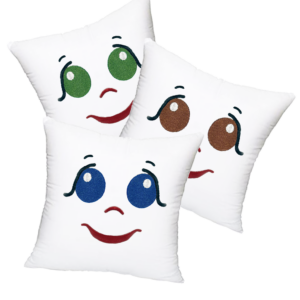
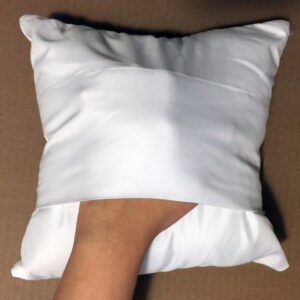
This delightful embroidered item is used as a nap time and night time reminder to keep hands, thumb and fingers in a safe place, away from the mouth. Each Pocket Pillow displays an appealing character with the selected eye color of your choice. This provides a positive approach to eliminating oral habits, and it is often used as a “reward” in conjunction with the Unplugging the Thumb program kit.
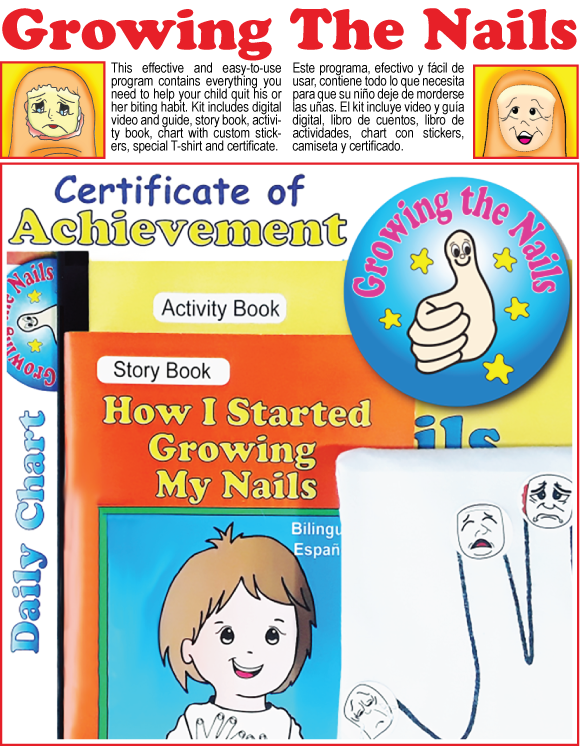
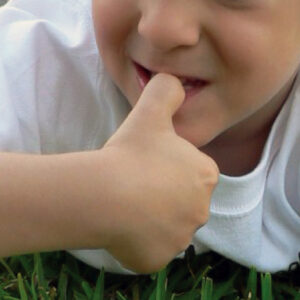
Growing The Nails success kit was developed to respond to requests for a kinder method that doesn’t involve negative means to bring about a change in a child’s behavior. Growing The Nails does this by providing a child-parent team approach. This effective and easy-to-use program contains everything you need to help your child quit his or her biting habit.
Kit includes story book, activity book, chart with custom stickers, special T-shirt, certificate, and digital guide and video to be downloaded upon purchase.
For more information, go to www.GrowingTheNails.com
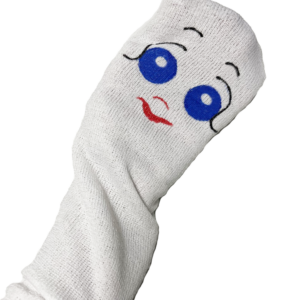

Your child will befriend his/her own sockie special helper and name it, as well. Encourages the child to eliminate the oral habit by acting as a “friendly reminder.” Comes in the same characters and eye colors as the Pocket Pillow and is often used together.
As seen in our Unplugging the Thumb Program.
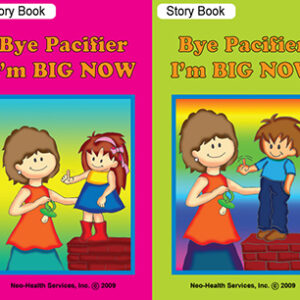
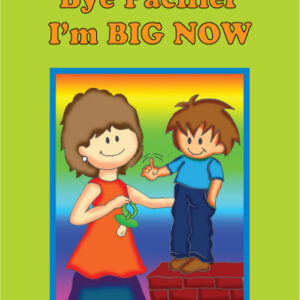
Bye Pacifier I’m BIG NOW, a book created to help kids quit pacifier in a kind way. This method makes you the helper instead of the enemy. Nothing is negative and your child slowly adapts to doing without the pacifier. Book comes with a guide for parents and a certificate to be given to the child at completion.
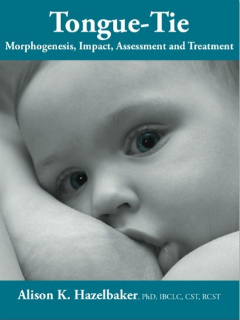
Tongue-tie: Morphogenesis, Impact, Assessment and Treatment busts the myths associated with tongue-tie that prevent the re-establishment of routine assessment and treatment of the condition in the early postpartum period. Dr. Hazelbaker provides both the old and new evidence that enables clinicians to properly assess, diagnose and treat this genetic condition that creates so many problems with infant feeding, speech and orofacial development. Dr. Hazelbaker presents the embryological and physiological underpinnings of tongue-tie, discusses tongue-tie’s impact, provides information on assessment and classification then rounds out her book with research-based treatment options and guidelines. She weaves in her personal story, having been tongue-tied and being the mother of two formerly tongue-tied children, as well as the stories of many other families into the science, creating both a readable and credible book. Tongue-tie: Morphogenesis, Impact, Assessment and Treatment is the definitive book on tongue-tie that will serve health professionals and policy-makers worldwide as they endeavor to change the clinical culture surrounding this common but underappreciated problem.